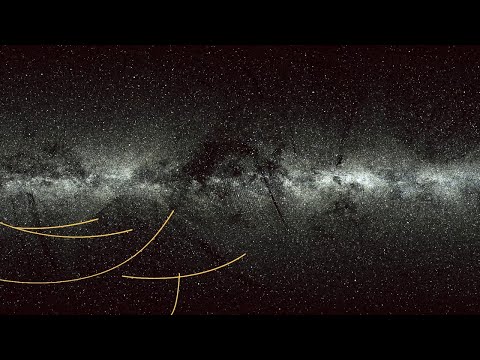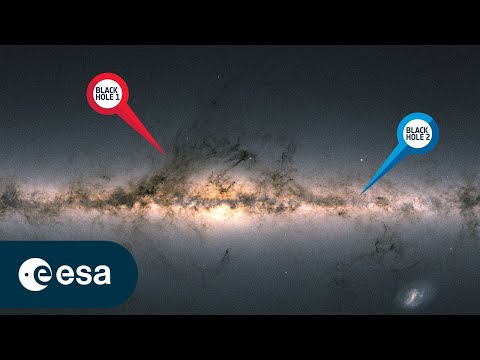We discovered a unique #BlackHole 
 #shorts
#shorts
Using data from our Gaia mission, astronomers have discovered not only the closest but also the second closest black hole to Earth. The black holes, Gaia BH1 and Gaia BH2, are respectively located just 1560 light-years away from us in the direction of the constellation Ophiuchus and 3800 light-years away in the constellation Centaurus. In galactic terms, these black holes reside in our cosmic backyard.
The two black holes were discovered by studying the movement of their companion stars. A strange ‘wobble’ in the movement of the stars on the sky indicated that they are orbiting a very massive object. In both cases, the objects are approximately ten times more massive than our Sun. Other explanations for these massive companions, like double-star systems, were ruled out since they do not seem to emit any light.


★ Subscribe: http://bit.ly/ESAsubscribe and click twice on the bell button to receive our notifications.
Check out our full video catalog: http://bit.ly/SpaceInVideos
Follow us on Twitter: http://bit.ly/ESAonTwitter
On Facebook: http://bit.ly/ESAonFacebook
On Instagram: http://bit.ly/ESAonInstagram
On LinkedIn: https://bit.ly/ESAonLinkedIn
On Pinterest: https://bit.ly/ESAonPinterest
On Flickr: http://bit.ly/ESAonFlickr
We are Europe’s gateway to space. Our mission is to shape the development of Europe’s space capability and ensure that investment in space continues to deliver benefits to the citizens of Europe and the world. Check out https://www.esa.int/ to get up to speed on everything space related.
Copyright information about our videos is available here: https://www.esa.int/ESA_Multimedia/Terms_and_Conditions
#ESA
#GAIA
#BlackHoles





For me your eyes are black hole डूब जाऊ
डूब जाऊ
Muito obrigado ESA!
She looks just like Alexandra Daddario
cool vid
I get giddy everytime ESA talks about blackholes .
.
The wobbling of the stars would constitute (for me at least ) as EM radiation being indirectly used/measured to detect the information/event of the blackhole.
) as EM radiation being indirectly used/measured to detect the information/event of the blackhole.
It's an interesting paradox because a blackhole can be considered a "non event" or the edge of events in its irreversibility of information. Unlike stars in which we can directly observe wobbles or lensing, we can't make direct observations of blackholes to infer about the stars around it. The gravitational properties of a BH are undetectable without mass being effected by light.
Furthermore, I think that if BHs are to be considered a singularity, that any and all events that do happen are eventually bound to the BH, beyond its horizon. What happens beyond the event horizon is a non-scattering of events, even chaos and entropy would cease.
Just as from "perspective of a photon" there is no time delay between the Big Bang and the moment it gives you information, there is similarly no distinction, from the perspective of a BH, between the billions of years before it consumes all the stars around it and after when they have all been consumed; it's all one event.
I believe this to summed up the mathematical/physical phrase
cT = 1
in which c is the speed of light, and T is spacetime and equal to ∆d∆t, as T approaches infinity. This can be counterintuitive to those familiar with calculus accustomed to "with respect to" described in a rational form, graphed on a 2-d Cartesian style coordinate system; most notoriously used to inform velocity.
Thank you ESA, thank you Natasha.